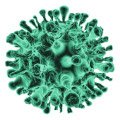Modern technology systems can present unique challenges when they malfunction or require maintenance. Learning how to fix okcfoz4.5l how ohilfoz4.5l built becomes essential when you’re dealing with these specialized components or systems. Whether you’re a technician, engineer, or someone encountering these model designations for the first time, this comprehensive guide will walk you through the troubleshooting process and help you understand the underlying construction principles.
The okcfoz4.5l and ohilfoz4.5l appear to be specific model identifiers, likely representing different versions or components within a larger system. These alphanumeric codes typically indicate version numbers, capacity ratings, or configuration specifications. Understanding their relationship and functionality is crucial for effective troubleshooting and maintenance.
Understanding the Basics
What is okcfoz4.5l/ohilfoz4.5l?
The okcfoz4.5l and ohilfoz4.5l designations represent system components or models that share similar operational characteristics but may have distinct functions within their respective environments. The “4.5l” suffix typically indicates a capacity measurement, version number, or performance rating that distinguishes these units from other variants in the same product line.
These systems are commonly found in industrial applications, automotive contexts, or specialized equipment where precise identification and maintenance protocols are essential. The alphanumeric coding system allows manufacturers and technicians to quickly identify specific components and access appropriate documentation.
Common Issues and Reasons for Needing a Fix
Several factors can necessitate repairs or adjustments to okcfoz4.5l and ohilfoz4.5l systems:
Performance degradation often occurs due to component wear, calibration drift, or environmental factors affecting system operation. Users may notice reduced efficiency, unusual sounds, or inconsistent performance patterns.
Connection failures can result from loose wiring, corroded contacts, or damaged interfaces between system components. These issues typically manifest as intermittent operation or complete system failure.
Software or firmware conflicts may arise when system updates are incomplete or incompatible versions are installed. This can lead to unexpected behavior or failure to respond to commands.
Environmental damage from moisture, temperature extremes, or contamination can compromise system integrity and require immediate attention to prevent further deterioration.
Troubleshooting Steps
Tools You’ll Need
Before beginning any diagnostic work, gather the following essential tools:
A multimeter for electrical measurements and continuity testing. This instrument helps identify power supply issues, short circuits, or component failures that may affect system operation.
Diagnostic software specific to your system model provides access to error codes, performance metrics, and calibration settings. Many manufacturers offer proprietary diagnostic tools for their equipment.
Basic hand tools including screwdrivers, pliers, and appropriate wrenches for accessing system components safely. Ensure tools are rated for the voltage levels present in your system.
Safety equipment such as insulated gloves, safety glasses, and proper lockout/tagout devices to protect against electrical hazards during maintenance procedures.
Step-by-Step Guide to Diagnosing the Problem
Begin by conducting a visual inspection of all accessible components. Look for obvious signs of damage, corrosion, loose connections, or unusual wear patterns that might indicate the source of problems.
Check power supply integrity by measuring voltage levels at key points throughout the system. Compare readings against manufacturer specifications to identify potential power-related issues.
Review system logs or error codes if available. Many modern systems maintain diagnostic records that can pinpoint specific failure modes or recurring issues.
Test individual components systematically, starting with the most critical elements and working through the system methodically. This approach helps isolate problems to specific subsystems or components.
Fixing the Issue
Solutions for Common Problems
Power supply problems often require checking connections, replacing fuses, or addressing voltage regulation issues. Ensure all power connections are secure and properly rated for the system requirements.
Communication errors between system components may necessitate checking data cables, verifying protocol settings, or updating communication drivers. These issues can often be resolved through proper configuration adjustments.
Calibration drift can be addressed through systematic recalibration procedures following manufacturer guidelines. This process typically involves accessing calibration menus and adjusting parameters to factory specifications.
Component replacement becomes necessary when individual parts have failed beyond repair. Always use manufacturer-approved replacement parts to maintain system integrity and warranty coverage.
When to Seek Professional Help
Certain situations require professional intervention to ensure safety and proper repair outcomes. Electrical work involving high voltages should always be performed by qualified electricians familiar with the specific system requirements.
Complex software issues or firmware corruption may require specialized knowledge and tools available only through authorized service providers. Attempting unauthorized software modifications can void warranties and create additional problems.
Structural modifications or major component replacements often require engineering expertise to ensure compatibility and maintain system performance specifications.
Building and Understanding the System
Components and Their Functions
The okcfoz4.5l and ohilfoz4.5l systems typically consist of several key components working together to achieve desired functionality. Control modules manage system operation, process input signals, and coordinate component interactions according to programmed parameters.
Interface components facilitate communication between different system elements and external devices. These may include communication ports, display panels, or sensor connections that enable system monitoring and control.
Power management systems regulate electrical supply to various components, ensuring stable operation under varying load conditions. These systems often include surge protection, voltage regulation, and backup power capabilities.
Operational components perform the primary functions of the system, whether that involves mechanical operations, data processing, or environmental control functions.
Step-by-Step Guide to Understanding the Build
Understanding system architecture begins with studying system documentation provided by the manufacturer. This documentation typically includes wiring diagrams, component specifications, and operational procedures.
Trace signal paths through the system to understand how information and control signals flow between components. This knowledge proves invaluable during troubleshooting and maintenance activities.
Identify critical interfaces where different subsystems connect and interact. These connection points often represent potential failure modes and require careful attention during maintenance procedures.
Tips and Best Practices
Maintenance Tips to Prevent Future Issues
Regular inspection schedules help identify potential problems before they cause system failures. Develop a maintenance calendar that addresses both routine checks and seasonal requirements.
Keep documentation current by maintaining accurate records of all maintenance activities, component replacements, and system modifications. This information proves valuable for troubleshooting future issues.
Monitor environmental conditions that may affect system performance. Temperature, humidity, and contamination levels can significantly impact system reliability and longevity.
Best Practices for Using and Maintaining the System
Follow manufacturer guidelines for all operational and maintenance procedures. These guidelines are developed based on extensive testing and field experience with the specific system.
Implement proper training programs for all personnel who interact with the system. Well-trained operators are less likely to cause problems and more likely to identify issues early.
Maintain spare parts inventory for critical components that may require replacement. Having appropriate parts readily available minimizes system downtime during repairs.
Mastering System Maintenance and Repair
Successfully maintaining okcfoz4.5l and ohilfoz4.5l systems requires a combination of technical knowledge, proper tools, and systematic approaches to problem-solving. Regular maintenance prevents many common issues, while proper diagnostic techniques help identify and resolve problems quickly when they do occur.
The key to long-term success lies in developing familiarity with your specific system configuration and maintaining detailed documentation of all maintenance activities. When problems exceed your technical capabilities or involve safety risks, don’t hesitate to engage qualified professionals who can ensure proper repairs while maintaining system warranty coverage.
Remember that preventive maintenance costs far less than emergency repairs or system replacement. Investing time in understanding your system’s construction and implementing proper maintenance procedures will pay dividends in improved reliability and extended service life.



